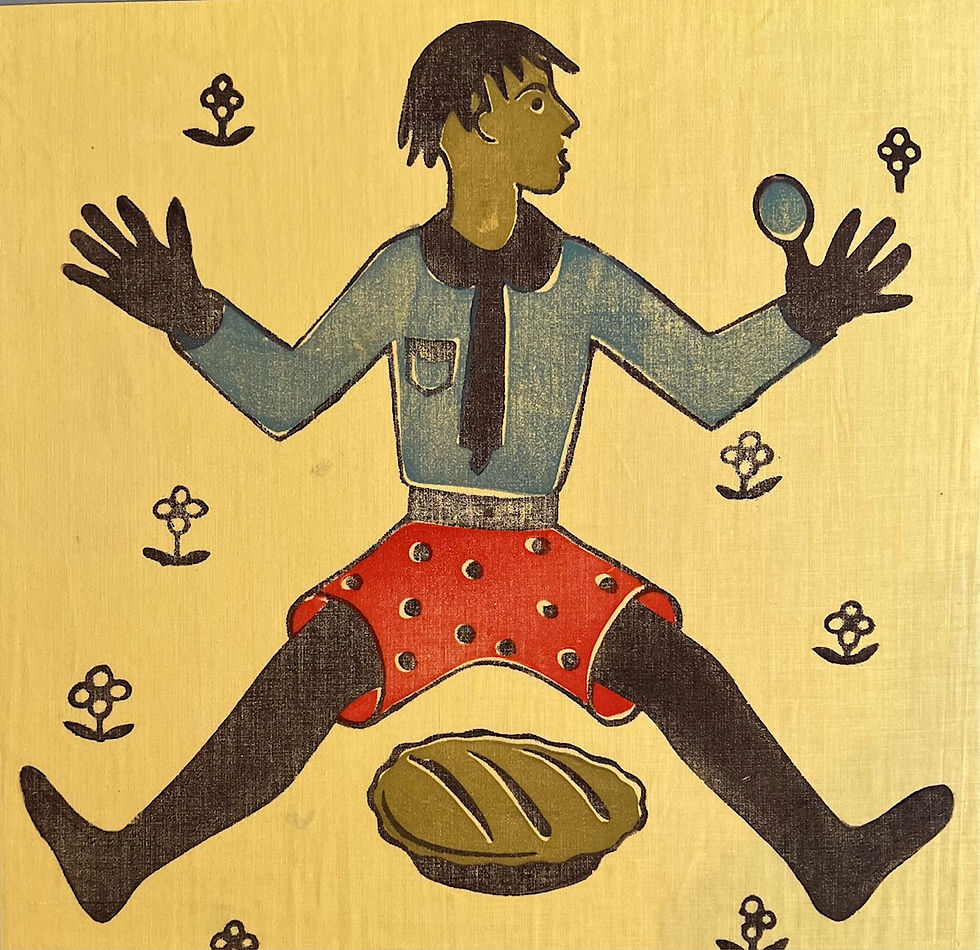Milwaukee Handicraft Project (Barbara Warren (1915 - 2005) and Others)
- walthercb1
- Feb 27
- 2 min read
Updated: Mar 16

Milwaukee Handicraft Project, Applied Design Blockprinted Textiles Volume VI Supplement, c. 1935 - 1942, twelve block printed designs on linen, images are various sizes, each is mounted in its original folder which measures 24 x 19 inches, all bear the Milwaukee Handicraft Project label, various designers, including Barbara Warren (1915 - 2005) ("Checkered Flower" and perhaps others), includes original portfolio binder
$2500
The Milwaukee Handicraft Project (MHP) was the most prolific and successful of the decorative arts projects of the Works Progress Administration (WPA). It served as a model for many other similar projects across the United States and attracted the attention of thought leaders as diverse as Frank Lloyd Wright and First Lady Eleanor Roosevelt. Designed with the dual goals of providing work for underprivileged women and the creation of well-designed household objects, the MHP began in 1935 under the direction of Elsa Ulbricht, an art professor at the Milwaukee State Teachers College. The MHP put a "'motley, careworn and harassed group of women,' poorly clothed, unkempt, and weak from malnutrition" to work producing functional and attractive decorative arts designed by MHP artists. They produced a wide array of handmade objects, including dolls, toys, clothing, furniture, books and textiles, all using inexpensive materials which could be crafted by previously unskilled women who were trained by the MHP. The workforce was multiracial and fully integrated. The large number of artisans provided enough labor to fill two shifts per day. Although the MHP created a variety of home goods, its textile designs by Professor Ulbricht and Barbara Warren and other yet to be identified artists are among the most noteworthy accomplishments. The designs were produced by hand-printing on linen from carved linoleum blocks using a similar process to woodblock printing that for many centuries had already been adopted by fine art practitioners. The MHP blocks could be arranged in a variety of patterns to create curtains, wall hangings, banners, tablecloths and other household textiles. The MHP produced at least six different portfolios containing samples of nearly two hundred different textile designs. The present example is Volume VI and contains designs influenced by Art Deco, Arts & Crafts, and folk art traditions all of which were part of the American design vocabulary during the Great Depression. By 1943, the WPA came to an end. No doubt, the outbreak of World War II and the accompanying economic boom helped to close the MHP and other WPA projects, as wide-spread unemployment became a distant memory.













.png)
Comments